From: The People's Forum <info@peoplesforum.org>
Food, trade and slumpflation
|
|
August 24, 2023 Amid Rising COVID-19 Transmission, Common-Sense Safety Practices Urged for Skilled Nursing Facilities, SchoolsAfter
a relatively calm summer, the Los Angeles County Department of Public
Health (Public Health) is reporting a rise in measures of COVID-19
transmission for the fifth consecutive week. To help mitigate the
spread, Public Health is working with institutions and partners to
provide information about and access to vaccinations, tests, and
therapeutics. Public Health continues to provide support and resources
to skilled nursing facilities, where people are at higher risk for
severe illness, and schools, where students and staff are indoors, in
close contact with each other, for long periods of time. The
increase in COVID-19 circulation is likely the combined result of
multiple factors, including summer travel, return to school, and the
emergence of new COVID-19 variant strains. Compared to other points
during the pandemic, hospitalizations and deaths remain relatively low.
However, people more vulnerable to severe illness and death, including
people who are immunocompromised, older or in skilled nursing
facilities, and the people they spend time with, should consider
precautions to protect against COVID infection. These protections
include wearing a well-fitting high filtration mask when in poorly
ventilated and/or crowded indoor spaces and on public transit, testing
when symptomatic and/or after a known COVID-19 exposure, remaining home
when sick, and seeking therapeutics if infected. In
Los Angeles County this week, an average of 512 daily cases was
reported, a nearly 35 percent increase from the week before. Reported
cases do not include home tests, so the actual number of COVID
infections in the community is much higher. Wastewater
concentrations of SARS-CoV-2, the virus that causes COVID-19, provide a
more complete picture of virus levels in the community. This week,
wastewater concentrations are at 28 percent of the 2022-23 winter peak
and have been steadily increasing since July 12, when they were at 8
percent of the peak. Based
on the most recent COVID-19 variant sequencing in Los Angeles County as
of July 22, XBB.1.5 and EG.5 now account for nearly equal proportions
of COVID-19 cases, combined making up 31 percent of the total sequenced
cases. XBB.2.3 accounts for the next highest proportion of sequenced
cases followed by XBB.1.16.1. Ninety-eight
percent of currently circulating strains in Los Angeles County are
descendants of Omicron XBB, including EG.5, which is what the fall
COVID-19 vaccine, likely to be released next month, will target. Los
Angeles County has not detected BA.2.86 in recently sampled sequences.
BA.2.86 is being closely monitored because it has many mutations that
may affect how our body responds to an infection. Currently,
Los Angeles County is reporting a daily average of 422
hospitalizations, a 30 percent increase from the week prior and there
has also been a consistent, small increase in the proportion of
emergency department visits attributed to COVID-19 over the past month.
While hospitalizations are increasing, the current levels are still far
lower than what was seen in 2022 during the summer peak, when there was
an average of 1,287 COVID patients hospitalized each day. When
COVID-19 transmission increases, people residing in skilled nursing
facilities are especially vulnerable. This week, the number of new
outbreaks opened in skilled nursing facilities rose to 39, up from 20
the week prior and 13 four weeks ago. And while resulting
hospitalizations and deaths among skilled nursing facility residents are
lower than at other points during the pandemic, nonetheless, increased
transmission of COVID-19 at nursing homes carries heightened risk for
frail elderly. As
a result of the increased outbreaks, Public Health is working closely
with local skilled nursing facilities to encourage adequate cleaning,
infection control, and ventilation in the facility, as well as to
communicate the importance of staff and visitors staying home when sick. Public
Health currently strongly recommends masking for staff in skilled
nursing facilities and requires it during outbreaks. All residents
should have access to clean well-fitting masks with good filtration and
these should be worn by anyone suspected positive when not in their
rooms. It is also strongly recommended that all residents, staff, and
visitors remain up to date with COVID vaccines. Visitors should test
before going into a skilled nursing facility and should strongly
consider wearing a mask while inside. Public
Health provides support at all skilled nursing facilities during
outbreaks and a Paxlovid prescription is encouraged, where appropriate,
for residents who test positive. With
increased COVID-19 transmission in the community, schools are another
place where outbreaks are possible due to large groups of people being
indoors together for extended periods of time. And while many children
may not experience severe illness associated with a COVID-19 infection,
other family members and school staff may be at higher risk. Parents
and guardians are encouraged to keep children home if they are sick,
including when they have a fever, bad cough, extreme fatigue, or a sore
throat. Those with respiratory symptoms or a known exposure should test
for COVID-19; many school districts have already received test kits for
free distribution to students and their families. If a child tests
positive for COVID-19, it is important to report that to the school as
soon as possible so that others can be informed of the exposure. Anyone
who tests positive for COVID-19 needs to isolate at home for a minimum
of 5 days. Public
Health is committed to working with schools to provide support during
outbreaks in addition to distributing free antigen tests and tool kits
with resources and information about reducing transmission. Those
infected with COVID-19 should talk to their health care provider about
treatment options, such as Paxlovid, as soon as possible. Treatment must
begin within five days of the onset of symptoms. To access free
telehealth services for treatment, contact the Public Health Call
Center, seven days a week from 8 a.m. to 8:30 p.m., at 1-833-540-0473. Los
Angeles County remains in the U.S. Centers for Disease Control and
Prevention’s Low Hospital Admission Level with 5.2 weekly COVID-19
hospital admissions per 100,000 people, reported on Aug. 21 for the
seven-day period ending Aug. 12, an increase from 4.1 hospital
admissions last week. Public
Health reports COVID-19 data weekly. The following table shows case,
wastewater, emergency department, hospitalization, and death data in Los
Angeles County over the past four weeks: Metric | Date of Weekly Report | 8/23/2023 | 8/16/2023 | 8/9/2023 | 8/2/2023 | Daily average cases | 512 | 384 | 333 | 264 | SARS-CoV-2 wastewater concentration as a percentage of the Winter 2022-2023 peak concentration value | 28% | 22% | 19% | 12% | Daily average of the percent of Emergency Department (ED) encounters classified as coronavirus-related | 4.4% | 3.9% | 3.5% | 3.2% | Daily average number of COVID-positive hospitalizations | 422 | 330 | 295 | 245 | Daily average deaths | 1.7 | 1.0 | 1.7 | 0.7 | Percent of all deaths due to COVID-19 | 1.1% | 0.9% | 1.3% | 0.8% | All
daily averages are 7-day averages. Data for past weeks are subject to
change in future reports. Time periods covered by each metric: cases =
week ending each Saturday; wastewater = week ending each Saturday, with a
one-week lag; ED data = week ending each Sunday; hospitalizations =
week ending each Saturday; deaths = week ending each Monday, with a
three-week lag; death percentage = week ending Monday, with a one-week
lag. Hospitalization counts do not include Prospect Hospitals, which on
average make up 2% of hospitalizations in LA County. Case
data is presented by episode date, an approximation of the date the
illness began, and death data is presented by date of death. This is a
change from how case and death data were presented prior to July 26,
2023, which was by date of report. Daily average cases and deaths do not
include Long Beach and Pasadena. |
A
wide range of data and dashboards on COVID-19 from the Los Angeles
County Department of Public Health are available on the Public Health
website at http://www.publichealth.lacounty.gov/COVIDdata including: Always check with trusted sources for the latest accurate information about novel coronavirus: - Los Angeles County Department of Public Health:
http://publichealth.lacounty.gov/media/Coronavirus/ Cases through 12:00pm 8/21/2023 | | | | Total Cases | | Laboratory Confirmed Cases (includes LB and Pas through 6/27/23; excludes LB and Pas after 6/27/23) | 3,777,831 | | Deaths (includes LB and Pas) | 36,618 | | Cases by Age Group (Los Angeles County Cases Only-excl LB and Pas) | | | - 0 to 4 | 113,593 | | - 5 to 11 | 283,829 | | - 12 to 17 | 278,529 | | - 18 to 29 | 763,174 | | - 30 to 49 | 1,143,624 | | - 50 to 64 | 621,546 | | - 65 to 79 | 270,017 | | - over 80 | 95,954 | | - Under Investigation | 2,572 | | Cases by Gender (Los Angeles County Cases Only-excl LB and Pas) | | | - Female | 1,845,342 | | - Male | 1,636,395 | | - Other | 1,860 | | - Under Investigation | 89,241 | | Cases by Race/Ethnicity (Los Angeles County Cases Only-excl LB and Pas) | | | - American Indian/Alaska Native | 6,781 | | - Asian | 266,863 | | - Black | 188,843 | | - Hispanic/Latino | 1,523,637 | | - Native Hawaiian/Pacific Islander | 17,870 | | - White | 497,616 | | - Other | 411,441 | | - Under Investigation | 659,787 | | Hospitalization (Los Angeles County Cases Only-excl LB and Pas) | | | - Hospitalized (Ever) | 182,917 | | Deaths by Race/Ethnicity (Los Angeles County Cases Only-excl LB and Pas) | | | - American Indian/Alaska Native | 79 | | - Asian | 4,542 | | - Black | 3,262 | | - Hispanic/Latino | 16,939 | | - Native Hawaiian/Pacific Islander | 116 | | - White | 9,270 | | - Other | 429 | | - Under Investigation | 92 | | CITY / COMMUNITY** | Cases | Case Rate | City of Agoura Hills | 6417 | 30728 | City of Alhambra | 25770 | 29715 | City of Arcadia | 13882 | 24036 | City of Artesia | 6065 | 36112 | City of Avalon | 292 | 7547 | City of Azusa | 17648 | 35268 | City of Baldwin Park | 29902 | 38951 | City of Bell | 17108 | 47088 | City of Bell Gardens | 17294 | 40152 | City of Bellflower | 31071 | 39970 | City of Beverly Hills | 11696 | 33882 | City of Bradbury | 71 | 6642 | City of Burbank | 33189 | 30966 | City of Calabasas | 5920 | 24339 | City of Carson | 35344 | 37662 | City of Cerritos | 13556 | 27076 | City of Claremont | 10500 | 28780 | City of Commerce* | 5906 | 45191 | City of Compton | 40636 | 40675 | City of Covina | 20466 | 41740 | City of Cudahy | 12273 | 50409 | City of Culver City | 12133 | 30435 | City of Diamond Bar | 13831 | 24048 | City of Downey | 47204 | 41312 | City of Duarte | 7570 | 34384 | City of El Monte | 43081 | 36737 | City of El Segundo | 4147 | 24705 | City of Gardena | 22131 | 36097 | City of Glendale | 60890 | 29488 | City of Glendora | 15229 | 28862 | City of Hawaiian Gardens | 5041 | 34349 | City of Hawthorne | 29944 | 33726 | City of Hermosa Beach | 4795 | 24377 | City of Hidden Hills | 390 | 20635 | City of Huntington Park | 26501 | 44551 |
|
|

And
remember, even if inflation were to fall further towards zero, prices
since the end of the COVID pandemic slump are up 10-15% in most G7
economies, with those prices sheer to stay and probably rise more. Yes,
the inflation rate is slowing, but U.S. consumer prices are 17% higher than they were at the beginning of 2021.

Inflation
remains sticky in the U.S., and most G7 economies, which is why central
banks continue to talk of further rises in their ‘policy’ interest
rates. But the expectation is that national rates of inflation will
come down (if slowly) over the rest of this year. Stock and bond market
investors and mainstream economists are generally pleased and
confident.
But
how about having no inflation at all? That is the situation in China,
where consumer prices fell in July compared to July 2022. This could be
transitory, however. Stripping out volatile food and energy prices,
so-called core inflation rose to 0.8% in July, the highest level since
January, from 0.4% in June.
Deflation
in China has been greeted by the China ‘experts’ as yet another sign
that China is heading for a debt deflation disaster. They reckon that
if the expectation of falling prices becomes entrenched, it could
further sap ‘demand’, exacerbate debt burdens and even lock the economy
into a debt trap that will be hard to escape using the stimulus measures
Chinese policymakers have traditionally turned to. I have dealt with these arguments in a previous post, so I won’t go over the rebuttal.
And
I am not sure working people would agree that having no inflation or
even falling prices is such a bad thing, particularly as it means, in
the case of China, that wages are still rising – so real incomes are
going up, not down, as in the G7 economies. But then, capitalists
companies like a bit of inflation to support profits and give them room
to raise prices if they can – as we have seen.

China’s
negative consumer inflation result was mainly driven by a drop in food
prices from a year earlier when food prices were pushed up by extreme weather conditions.
Prices of pork, a staple of Chinese dinner tables, plunged 26% in July
from a year earlier. Vegetable prices also fell last month.
That’s
not the case in the G7 economies. UK food prices rose 17.4% in the year
through June, while Japanese prices were up 8.9%, and French prices
were up 14.3%. In each country, food prices are rising much more quickly
than prices of other goods and services. The U.S. has fared better,
with food prices up only 4.6% from a year earlier in June.

Food
prices globally have fallen from the 50-year high in March 2022. But
now it seems that the global food price index is turning up again,
rising 1.3% in July from June, a second increase in four months. It
remains 36% higher than it was three years ago.

The
new rise in food inflation is partly driven by the collapse of the
Black Sea grain deal between Russia and Ukraine to export their
harvests. Last month, Russia withdrew from the deal and subsequently targeted the country’s food-export infrastructure with drone attacks on Odesa’s port facilities. Originally
food price inflation was the product of supply chain blockages even
before the Russia-Ukraine war began; now, it seems that those blockages
could well return.
And
then there is a further development: unusual weather patterns hitting
harvests of a variety of grains, fruits, and vegetables around the
world. July 2023 was the hottest month of all Julys on record. Climate
scientists are saying that global warming to dangerous levels is coming
upon the planet much faster than previously expected. “Adverse weather conditions, in light of the unfolding climate crisis, may push up food prices,” said European Central Bank President Christine Lagarde.
The
impact of unfavorable weather has been most notable in India, where
heavy rain has reduced the rice harvest and pushed food prices sharply
higher. The Indian government last month imposed a ban on exports of
certain types of rice, an echo of similar restrictions on the overseas sale of food staples that were announced by a number of governments as prices surged last year.
One additional risk to food supply is the strong natural warming condition in the Pacific Ocean known as El Niño,
which can lead to changes in weather patterns and reduced harvests of
some crops. The Australian government’s Bureau of Meteorology has issued
an El Niño alert, saying there is a 70% chance that the climate pattern
will emerge later this year. Previous El Niño periods have usually (but
not always) led to rising grain prices. The ECB reckons that a
one-degree celsius rise in temperature during El Nino historically
raises food prices by more than 6% one year later.

And
then there are the food monopolies. Four companies – the
Archer-Daniels-Midland Company, Bunge, Cargill, and Louis Dreyfus, known
collectively as ABCD – control an estimated 70-90% of the global grain
trade. They have been taking advantage of the food supply crisis by
hiking their profit margins. Further up the food chain, just four
corporations — Bayer, Corteva, ChemChina, and Limagrain — control more than 50% of the world’s seeds. From seeds and fertilizer to beer and soda, just a small number of firms maintain
a powerful hold on the food industry, determining what is grown, how
and where it’s cultivated, and what it sells for. Only ten companies
control almost every large food and beverage brand in the world. These
companies — Nestlé, PepsiCo, Coca-Cola, Unilever, Danone, General Mills,
Kellogg’s, Mars, Associated British Foods, and Mondelez — each employ
thousands and make billions of dollars in revenue every year.

Energy
demand is relatively ‘elastic’ because there are rising alternatives
fossil fuel production, and energy demand varies with global growth,
industrial production, and trade. So when the world economy slows, and
manufacturing goes into recession, as it has now, then demand for
energy can fall back. That’s not the case for food. Billions in the
poorest parts of the world need ‘food security’ as the cost of food
takes up most of their incomes. And a fall in food supply will drive up
prices much more than energy.
Indeed,
it is food prices that will remain ‘sticky,’ and food inflation could
well accelerate from here. Supply and international trade are in the
doldrums. The IMF expects growth in global trade to slow to 2% this
year from 5.2% last year. The World Bank and the World Trade
Organization both forecast trade will grow by just 1.7% this year.
Even a partial recovery in 2024 is predicted to fall well short of
trade’s average yearly growth of 4.9% during the two decades before the
pandemic. “Overall, the outlook for global trade in the second half of
2023 is pessimistic,” the UNCTAD wrote in a June report. The
organization now forecasts the global goods trade to shrink by 0.4% in
the second quarter when compared with the previous quarter.
This
is a confirmation of the end of globalization since the end of the
Great Recession of 2008-9 and the long depression of the 2010s. Trade
growth no longer provides an escape when domestic growth is weak.
Indeed, the world is entering a period of deglobalization led by the
U.S. as imposes yet more measures on Chinese trade and investment with
its ‘chip war’. The Biden administration has also kept in place most of the tariffs on goods from China and other countries implemented by the Trump administration.
This
provides part of the explanation for the significant drop in Chinese
exports to the rest of the world, according to the latest data.
Overseas shipments from China slumped 14.5% in July from a year earlier,
the steepest year-over-year decline since February 2020. Again, the
Western experts see this as a sign of imminent collapse or stagnation of
the Chinese economy. But it is more a sign of the weakening of
economic growth, investment, and real wages in the G7 economies.
Indeed
China continues to dominate global trade as it pushes deeper into
markets other than the U.S. China’s overall share of global goods
exports was 14.4% in 2022, up from 13% the year before the pandemic and
11% in 2012, according to World Trade Organization data.
A
growing share of China’s exports are heading to regions including the
Middle East and Latin America, reflecting strengthening economic links
thanks to Chinese investment and its hunger for natural resources.
China is also finding success exporting cheap electric cars and
smartphones to emerging markets, edging out much more expensive Western
alternatives. The country surpassed Japan as the world’s biggest exporter of vehicles in the first quarter of 2023.
The
shift in export destinations also reflects worsening relations between
China and the U.S.-led West that are crimping trade. Tariffs on a range
of goods mean China accounted for around 15% of U.S. imports in the 12
months through May, down from more than 20% before Donald Trump hit a
range of Chinese goods with tariffs in 2018.
Rising
food inflation, falling trade growth, and a global manufacturing
recession hardly make a recipe for an optimistic ‘soft landing’ for the
G7 economies over the next year.--
Please subscribe our CHINA email list
e-mail: ActivistWeb@gmail.com
Tel: (626)394-0710
Please consider making a donation to the important work of National Immigrant Solidarity Network,Action LA and Peace NO War
Send check pay to:
NISN/AFGJ
National Immigrant Solidarity Network
P.O. Box 751
South Pasadena, CA 91031-0751Date: Mon, Aug 7, 2023
|
Dear friends and comrades, McCarthyism Is Back: Together We Can Stop It We
stand together against the rise of a new McCarthyism that is targeting
peace activists, critics of US foreign policy, and Chinese Americans.
Despite increased intimidation, we remain steadfast in our mission to
foster peace and international solidarity, countering the narrative of
militarism, hostility, and fear. |
| | | As
the US government grapples with a major crisis of legitimacy, it has
grown fearful of young people becoming conscious and organized to change
the world. Influential media outlets like The New York Times
have joined right-wing extremists in using intimidation tactics to
silence these advocates for change, affecting not only the left but
everyone who supports free speech and democratic rights.
The political and media establishments, both liberal and conservative, have initiated
McCarthy-like attacks against individuals and organizations criticizing
US foreign policy, labeling peace advocates as "Chinese or foreign
agents." This campaign uses innuendo and witch hunts, posing a
threat to free speech and the right to dissent. We must oppose this
trend.
Scientists,
researchers, and service members of Chinese descent have been falsely
accused of espionage and unregistered foreign agency, often with cases
later collapsing due to insufficient evidence. Similar to the old “Red
Scare” and McCarthy periods, when scores of organizations and leaders
like W.E.B Du Bois, Eugene Debs, Emma Goldman, Paul Robeson and Martin
Luther King Jr and others were attacked with fact-less accusations, today,
prominent organizations and individuals, including CODEPINK, The
People's Forum, and Tricontinental Institute have been targeted, with
smears and accusations propagated by outlets like The New York Times.
Their strategy paints a sinister image of a secret network funding the peace movement. However, there's nothing illegal or fringe about opposing a New Cold War or a "major power conflict" with China, views shared by hundreds of millions globally. Receiving donations from US citizens who share these views is not illicit.
Media outlets have tried
to scandalize funding sources of several organizations that are on the
frontlines working with anti-racist, feminist, anti-war, abolitionist,
climate justice, and other movements throughout the United States and
globally. Meanwhile, when white neoliberal philanthropists
flood the non-profit complex with significant funds to support their
political agendas this is rarely scrutinized or made accountable to the
communities they impact.
From
The New York Times to Fox News, there's a resurgence of the Red Scare
that once shattered many lives and threatened movements for change and
social justice. This attack isn't only on the left but against everyone
who exercises their free speech and democratic rights. We must
firmly resist this racist, anti-communist witch hunt and remain
committed to building an international peace movement. In the face of
adversity, we say NO to xenophobic witch hunts and YES to peace. |
| | Initial signers: CODEPINK
• The People's Forum • Tricontinental Institute for Social Research •
ANSWER Coalition • Anticapitalism for Artists • Defend Democracy in
Brazil • Families for Freedom • IFCO/Pastors for Peace • Mulheres de
Resistencia do Exterior • Nodutdol • NYC Jericho Movement • NYC Young
Communist League • Pivot to Peace • Radical Elders • Abby Martin • Andy
Hsaio • Ben Becker • Ben Norton • Bhaskar Sunkara • Brian Becker • Carl
Messineo • Chris Hedges • Claudia de la Cruz • Corinna Mullen • David
Harvey • Derek R. Ford • Doug Henwood • Eugene Puryear • Farida Alam •
Fergie Chambers • Gail Walker • Geo Maher • Gerald Horne • Gloria La
Riva • Hakim Adi • Heidi Boghosian • Immanuel Ness • James Early •
Jeremy Kuzmarov • Jill Stein • Jim Garrison • Jodi Dean • Jodie Evans •
Johanna Fernandez • Karen Ranucci • Kenneth Hammond • Koohan Paik-Mander
• Lee Camp • Lisa Armstrong • Manolo de los Santos • Manu Karuka • Mara
Verheyden-Hilliard • Matt Hoh • Matt Meyer • Matteo Capasso • Max
Lesnik • Medea Benjamin • Michael Steven Smith • Nazia H. Kazi • Radhika
Desai • Rania Khalek • Richard M Walden • Robin D.G. Kelley • Roger
Waters • Roxanne Dunbar Ortiz • Ruth Wilson Gilmore • Salvatore Engel
di-Mauro • Sheila Xiao • Stella Schnabel • Vijay Prashad • Vivian
Weisman |
| |
|
|
|---|
|
|
| | | 320 W. 37th St., 10018, New York |
|
| |
|
|
|---|
|
|
|
Please subscribe our CHINA email list
e-mail: ActivistWeb@gmail.comFBI frame-up overturned
Three of Newburgh 4 freed.
By Otis Grotewohl
August 3, 2023
https://www.workers.org/2023/08/72709/?utm_source=rss&utm_medium=rss&utm_campaign=fbi-frame-up-overturnedthree-of-newburgh-4-freed
In
a partial victory, three members of the “Newburgh 4,” Black Muslims
from Newburgh, New York, who were wrongfully framed by the FBI in a 2009
“bombing plot,” were finally released from prison. This came after a
recent ruling by a federal judge. Three of the Newburgh 4 are African
American, and one is a Haitian immigrant.

Onta
Williams, David Williams and Laguerre Payen were happy to be released
after being unjustly incarcerated for 12 years, based on an obvious FBI
frame-up and entrapment scheme.
The
situation stems from a 2009 arrest and a 2011 conviction that claimed
four individuals—all of whom are of the Islamic faith—were plotting to
use stinger missiles to shoot down military airplanes flying out of an
Air National Guard base in Newburgh, New York, and blow up two
synagogues in Riverdale. (New York Times, July 27)
Evidence
now suggests that the FBI, along with an informant named Shahed
Hussain, was responsible for the whole fiasco. Hussain is a Pakistani
businessperson who had been working with the FBI prior to the sting
operation. Records show that he was paid a generous salary of $100,000
by the FBI to “seek out Muslim radicals” at local mosques. (The
Guardian, Dec. 12, 2011)
Hussain’s
provocative rhetoric and flashy appearance raised suspicion among the
Islamic clergy at Masjid al-Ikhlas, the Islamic Learning Center in
Newburgh infiltrated by Hussain, where he met the four individuals who
became FBI scapegoats.
Masjid
Imam Salahuddin Muhammad was leery of Hussain’s reactionary and
forceful demeanor from the time he first stepped foot into the Newburgh
community mosque. “This guy said ‘women should not be heard, not be
seen.’ I thought that was strange,” Muhammad told The Guardian. Hussain
presented himself in a cartoonish manner, reinforcing negative
stereotypes, and that raised suspicion among several members of the
Mosque.
Findings of facts
U.S.
District Judge Colleen McMahon’s 28-page decision concludes that “all
four men were caught up in a scheme in 2009 to attack the synagogues,
community center and launch stinger missiles at military aircraft,
driven by overzealous FBI agents and an ‘unsavory’ confidential
informant.” (Reuters, July 28)
Judge
McMahon is the same judge who originally ruled to place the Newburgh 4
behind bars in 2011. Allegedly, she did so reluctantly, and her
arbitrary “catch and release” style rulings in the case are an example
of why the working class and oppressed cannot rely on bourgeois courts
to seek any type of sincere justice.
Despite
evidence of his innocence, James Cromitie, the individual considered by
FBI informant Hussain to be the “ringleader,” remains unfairly
incarcerated. Testimony and court exhibits visibly demonstrate that none
of the Newburgh 4 would have been associated with the situation had it
not been for the FBI’s instigation and provocation.
Conclusion of the case, from a Marxist view
The
FBI has a history of infiltrating and attempting to disrupt political
and religious organizations, notably those led by oppressed peoples. In
this situation, the FBI took advantage of four working, poor and
nationally oppressed individuals who were falsely promised an escape
from poverty. None of the Newburgh 4 had any interest in carrying out
violent actions, but the idea of breaking free of constant hardship
sounded appealing, understandably so.
The
FBI plot was also an effort on their part to divide the Muslim and
Jewish communities. The arrest came at a time when U.S. politicians,
military leaders and the corporate media were constantly pushing
Islamophobia and anti-Muslim bigotry. The release of Onta Williams,
David Williams and Laguerre Payen is only a partial victory, however,
because James Cromitie remains behind bars and his future is uncertain.
Communists and anti-racist activists need to demand freedom for all the
Newburgh 4 and for a complete abolition of the FBI!
Full
Report Now Available: Survey by Columbia University and Committee of
100 Reveals Groundbreaking Data on Chinese American Communities
National
Survey Data Shows Nearly 3 Out Of Every 4 Chinese Americans Have
Experienced Racial Discrimination In The Past 12 Months
New York, NY (August 2, 2023) – After releasing its executive summary in
April, Columbia University’s School of Social Work, one of the world’s
leading research universities, and Committee of 100, a non-profit
membership organization of prominent Chinese Americans, today announced
that the full report “The Fight for Representation: The State of Chinese
Americans 2022” is now available.
The
more than 60-page report summarizes a year-long research project and
survey on the critical health, economic, and sociopolitical conditions
of today’s Chinese American population. The research has been led by Dr.
Qin Gao, Professor and Director of the China Center for Social Policy
at Columbia University School of Social Work. Jennifer So, a doctoral
student at Columbia University, Samuel Collitt, a researcher at
Committee of 100, and Stacie Tao, also a doctoral student at Columbia
University, co-authored the report and helped spearhead the research
project.
The first and
largest project of its kind, the “State of Chinese Americans” survey
gathered information from nearly 6,500 participants from across the
United States, compiling data related to demographics, politics,
cultural identity, health, economic security, and social engagement.
This research effort was supported by over 100 Chinese American and
allied organizations nationwide, who shared the survey with community
members in English, simplified Chinese, and traditional Chinese.
This
survey project examines three main research questions: What are the
demographic characteristics of Chinese Americans regarding birthplace,
place of upbringing, languages spoken at home, English language
proficiency, and cultural identity? What are the political opinions and
levels of engagement among Chinese Americans? Lastly, what are the
health and economic status and needs of Chinese Americans. In addition
to quantitative data, the report also features quotes from study
participants who shared their experiences.
Collecting
disaggregated, accurate, and timely data on Chinese Americans will help
inform policymakers and the public on the diverse set of opinions,
perceptions, and needs of Chinese Americans across the country. This
will enable key decision-makers to develop timely and responsive
policies, programs, and services to address those needs.
To download the full report and executive summary, please click here.
KEY FINDINGS
Racism against Chinese Americans continues.
While the overwhelming majority of survey respondents see themselves as
an accepted part of American society, culturally blended between
American and Chinese traditions, they are also marginalized. They have
experienced discrimination in their daily lives with: - Nearly 3 out of 4 (74%) respondents having experienced racial discrimination or racism-related vigilance in the past 12 months;
- 55% worry about their safety relating to hate crimes or harassment;
- 9% having been physically intimidated/assaulted and 7% having had property vandalized/damaged.
The overwhelming majority of Chinese American citizens vote. They
care deeply about issues facing the U.S. society, and they want better
relations and more collaboration between the U.S. and China, including:
- The
overwhelming majority (83%) of survey respondents are registered
voters, and of those registered voters, 88% voted in the 2020
presidential election;
- Racism,
gun control, the economy, and crime were identified as the top four
most important issues facing the U.S. according to respondents;
- Most respondents (82%) agreed that the U.S. should build a collaborative economic relationship with China.
Chinese Americans are not homogenous.
While often stereotyped as a “model minority,” many face disadvantages
or hardships in health and economics and need better support from
policies and services, including:
- Nearly
one in four (24%) respondents state they are at moderate or severe risk
when asked about their psychological distress, including feeling
worthless, depressed, hopeless, restless, nervous, or that everything
was an effort;
- Nearly a quarter (24%) reported either fair or poor physical or mental health, or having one or more types of disability;
- Nearly a quarter (23%) reported experiencing some form of medical disadvantage or economic hardship in the past 12 months.
RECOMMENDATIONS
Law
enforcement, elected officials, educators, and government agencies
should consider and act upon the following recommendations to help the
Chinese American community:
To promote greater equity and inclusion of Chinese Americans:
- Incorporate
or expand Asian American history lessons across all levels of
education, from K-12 to higher education, to help Americans understand
the diverse accomplishments, contributions, and challenges of Chinese
and Asian American populations;
- Allocate
or increase funding for language access to provide Chinese Americans
with low English proficiency with equal access to the same level of
services and opportunities as English-speaking individuals;
- Establish clear guidelines on addressing and responding proactively to reports of anti-Asian hate and discrimination.
To
increase levels of political engagement and reduce the negative impact
of contentious political rhetoric and strained U.S.-China relations on
the lives of Chinese Americans:
- Increase
get-out-the-vote efforts and political mobilization of Chinese
Americans, especially at the grassroots level to increase political
participation of groups whose voices tend to be less heard and who tend
to turn out at lower rates: younger, lower income, less educated, and
less English-proficient groups;
- Actively
discourage and speak up against inflammatory and derogatory language in
discussion of U.S.-China relations, which has a direct and negative
impact on the lives of Chinese Americans;
- Establish
and increase opportunities to encourage more in-depth, meaningful
conversations about political and civic engagement issues among Chinese
Americans and across different racial or ethnic groups to enhance mutual
understanding and respect.
To address the health and economic needs of Chinese Americans:
- Provide
public assistance and health care services in various languages and
dialects to support Chinese Americans with limited English proficiency
to receive the economic support and medical services they need;
- Raise
visibility and facilitate discussions of disadvantages and hardships
among the Chinese American community to improve awareness and dismantle
model minority stereotypes;
- Increase the number of bilingual, culturally-competent Chinese and Asian American mental health and social work professionals.
SURVEY METHODOLOGY
The
State of Chinese Americans Survey questionnaire included 77 questions
across six modules: demographics, racial and cultural background,
health, economic activities and insecurity, social engagement, and
political engagement. Two open-ended questions in the survey asked
respondents to describe their experience with racial discrimination and
coping mechanisms, and the impact of U.S.-China relations in their daily
lives. The nationwide survey was conducted online in English,
simplified Chinese, and traditional Chinese, and invited the
participation of all adults self-identifying of Chinese-ethnic origin
and living in the United States. No incentives were provided for survey
participation.
Study
participants were recruited through community outreach in partnership
with more than 100 organizations throughout the country. This study used
a non-probability sampling method with targeted subgroup recruitment
efforts focusing on a set of key demographic characteristics for diverse
representation. Special efforts were made to recruit participants in
geographical areas where Chinese Americans are underrepresented. To
ensure sufficient sample sizes for the harder-to-reach individuals with
lower levels of income, education, and English proficiency, roughly
one-third of the partner organizations were specialized in community
engagement, resource provision, and housing. The remaining two-thirds
were affiliated with advocacy, commerce, culture, religion, and various
professions.
After data
collection was completed, statistical weights were created using the
post-stratification raking method. The raking method is commonly used in
survey research to adjust for nonresponse and sampling biases. The
method involved calibrating the sample statistics so that the sample
approximates the national Chinese American population on the known
distribution of key demographic characteristics including gender, age,
education level, English proficiency, U.S. citizenship, income level,
and census region based on the 2020 American Community Survey (ACS)
5-year estimates. All results reported are with the statistical weights
applied.
PARTNERSHIPS
Columbia
University and Committee of 100 are proud to have partnered with over
100 community, professional, and advocacy organizations across the
country in rolling out this survey. Additionally, the research team
completed a successful pilot study of the survey last summer, with the
help of the Chinese-American Planning Council, Chinese American Women in
Action, the Community Youth Center of San Francisco, and the U.S.
Heartland China Association.
Committee
of 100 and Columbia University would like to thank each of the partners
who helped distribute the survey to their respective audiences to help
gain responses.
Premier Partners
1990
Institute, Alliance for Families with Developmental Needs, Asian
American Donors Program, Asian American Government Executives Network,
AsAmNews, Asian American Women Artists Association, BeChinatown,
Biing-Huei Su, The Carter Center, Chicago Chinese Forum, The China
Project, Chinese American Association of Greater Chicago, Chinese
American Citizens Alliance – Boston, Chinese American Citizens Alliance –
Portland, Chinese American Citizens Alliance – Seattle, Chinese
American Citizens Alliance National, Chinese American Museum DC, Chinese
American Pioneer Heritage Committee, Chinese American Women in Action,
Chinese American Heritage Foundation, Chinese Historical Society of
Southern California, Chinese-American Planning Council, Inc., Coalition
for a Better Chinese American Community, Columbia Business School,
Community Youth Center of San Francisco, Deloitte, Friends of Children
with Special Needs, George H. W. Bush Foundation for U.S.-China
Relations, Henry Tom, Institute for China-America Studies, Kaiming Head
Start, Museum of Chinese in America, OCA – Asian Pacific American
Advocates National, OCA – Asian Pacific American Advocates San Diego,
Overseas Student Service Corp., Southern California Chinese Lawyers
Association, UCI Chinese Alumni Chapter, UCSF Asian Health Initiative,
United States Heartland China Association, The U.S.-China Perception
Monitor, World Journal, Wu Yee Children’s Services.
Affiliate Partners
1882
Foundation, Alliance of MN Chinese Organizations, API Council, Asia
Society, Asian & Pacific Islander American Health Forum, Asian
Columbia Alumni Association, Asian American Business Development Center,
Asian American Unity Coalition, Asian Pacific American Libraries
Association, Asian Real Estate Association of America, Asian Women for
Health, Asians Fighting Injustice, Association of Asian American
Investment Managers, Association of Chinese American Scientists and
Engineers, Brooklyn Public Library, CAAM Chinese Dance Theater, Cal
Alumni Association, Carlsbad Chinese-American Club, Chinatown
Partnership, Chinese Adoptee Alliance, Chinese American Association for
Autistic Community, Chinese American Association of Lexington, Chinese
American Association of Minnesota, Chinese American Citizens Alliance –
Houston, Chinese American Citizens Alliance – Las Vegas, Chinese
American Citizens Alliance – Oakland, Chinese American Citizens Alliance
– San Antonio, Chinese American Citizens Alliance – San Francisco,
Chinese American Community Health Services, Chinese American History
Group, Chinese American WWII Veterans, Chinese Consolidated Benevolent
Association NY, Chinese Consolidated Benevolent Association Georgia,
Chinese Health Initiative of San Mateo County, Chinese Historical
Society of America, Coalition for Asian American Children and Families,
Colorado Asian Pacific United, Crossings TV, DC Talk Story, Global China
Connection, Greater Austin Asian Chamber, Hope Chinese School, Hua Yuan
Science and Technology Association, KTSF 26 News, MinKwon Center for
Community Action, Monte Jade West, NAPABA, New York Chinese Cultural
Center, New Jersey Chinese-American Chamber of Commerce, Shaolin Hung
Mei Kung Fu, South Coast Chinese Cultural Association, South Cove
Community Health Center, The Asian American Foundation (TAAF),
University of Minnesota China Center, Upper Manhattan Asian American
Alliance, US-China Business Council, US-China Peoples Friendship
Association–Minnesota Chapter, Utah Chinese Association, Veterans for
Peace, You May US.
FURTHER ACKNOWLEDGEMENT
Committee
of 100 and Columbia University are grateful for the participation and
support of the Advisory Group members on this project, whose knowledge
and expertise across the fields of academia and civic engagement served
to guide the project’s development and implementation:
- Gordon H. Chang, Olive H. Palmer Professor in Humanities, Professor of History, History Department, Stanford University
- Albert Chao, President and CEO, Westlake Corporation
- Anne Shen Chao, Adjunct Lecturer in Humanities, Rice University
- Anla Cheng, Founder and Chair, The China Project
- Deborah Davis, Professor Emerita of Sociology, Yale University
- Wang Feng, Professor of Sociology, University of California Irvine
- Kenneth Fong, Founder and Chairman, Kenson Ventures, LLC
- Irwin
Garfinkel, Mitchell I. Ginsberg Professor Emeritus of Contemporary
Urban Problems in the Faculty of Social Work, Columbia University
- Eugenia Lean, Professor of East Asian Languages and Culture and Vice Provost for Faculty Affairs, Columbia University
- David Lei, Board Chair, Chinese Performing Arts Foundation
- Ida Liu, Global Head, Citi Private Bank
SPONSORSHIPS
Committee
of 100 and Columbia University would like to thank Kenson Ventures, LLC
and Citi Private Bank as the two lead sponsors on this research.
About Columbia University
Columbia
University is one of the world’s most important institutions in higher
education. It has 17 undergraduate, graduate, and professional schools,
four affiliated colleges and seminaries in Manhattan, and a wide array
of research institutes and global centers around the world. More than
40,000 students, award-winning faculty, and professional staff define
the University’s underlying values and commitment to pursuing new
knowledge and educating informed, engaged citizens. Founded in 1754 as
King’s College, Columbia is the fifth oldest institution of higher
learning in the United States. Visit https://www.columbia.edu.
About Columbia University School of Social Work
Columbia
University’s School of Social Work (CSSW) is a top-ranked school and
the first social work school established in the United States. Since
1898, Columbia faculty and alumni have played a leading role in
advancing the field of social work through scholarly and professional
contributions. Visit https://socialwork.columbia.edu.
Tel: (626)394-0710
Home / Nuestramérica / Nación Mapuche / Nación
Mapuche. Toma de Municipalidad de Ercilla: “Por los PPM en huelga de
hambre y por los Lamgen presos dispersos en diferentes regiones”
EEUU ya no ejerce la dignidad imperial. Su triunfalismo y negación de la realidad se expresa, en el terreno de la geopolítica, en la soberbia....,



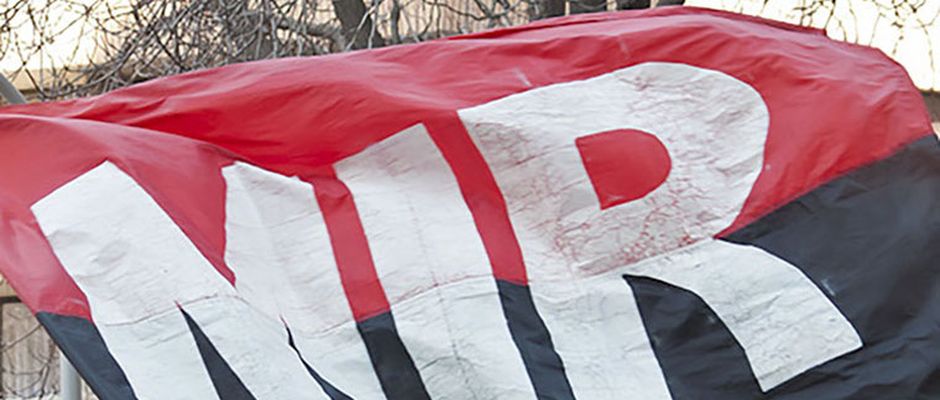 Hace
58 años surgió en Chile el Movimiento de Izquierda Revolucionaria,
protagonista fundamental del período más álgido, la presidencia de
Allende, de la historia de Chile..,
Hace
58 años surgió en Chile el Movimiento de Izquierda Revolucionaria,
protagonista fundamental del período más álgido, la presidencia de
Allende, de la historia de Chile.., El sistema fundado sobre los falsos postulados liberales de Smith presenta sistemáticamente síntomas indeseables....,
El sistema fundado sobre los falsos postulados liberales de Smith presenta sistemáticamente síntomas indeseables....,
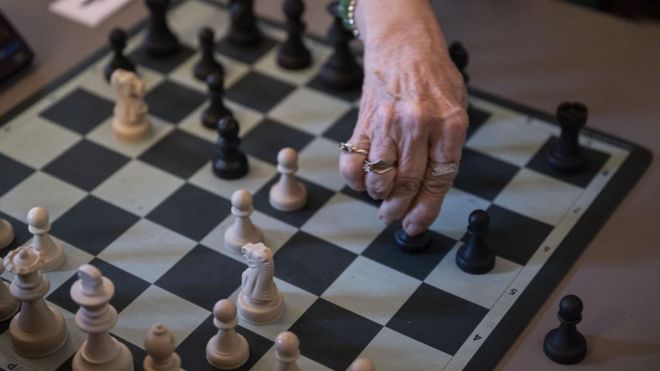


 La
teoría marxista de la crisis indica que estamos en «época de revolución
social» que puede dar paso a la victoria capitalista o a la socialista,
pero también a la «destrucción mutua»....,
La
teoría marxista de la crisis indica que estamos en «época de revolución
social» que puede dar paso a la victoria capitalista o a la socialista,
pero también a la «destrucción mutua»....,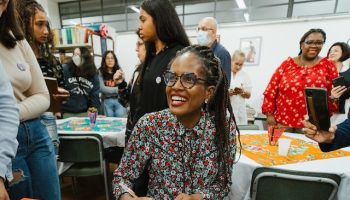


 Las
FARC Segunda Marquetalia publican un artículo de opinión firmado por el
Comandante Iván Márquez, el pasado 24 de julio, sobre la estrategia
geopolítica bolivariana :: Audio de Márquez....,
Las
FARC Segunda Marquetalia publican un artículo de opinión firmado por el
Comandante Iván Márquez, el pasado 24 de julio, sobre la estrategia
geopolítica bolivariana :: Audio de Márquez....,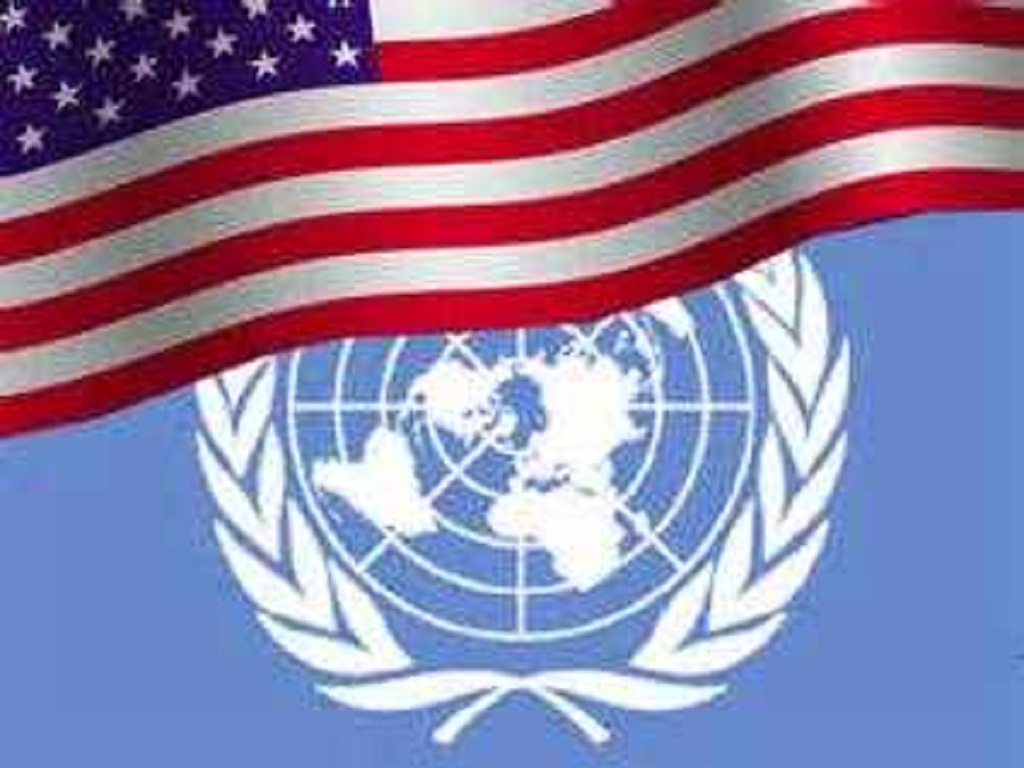 Las
relaciones económicas capitalistas son frías: solo interesa la tasa de
ganancia. Si para eso son necesarias matanzas, el sistema lo hace, con
el silencio cómplice de la ONU....,
Las
relaciones económicas capitalistas son frías: solo interesa la tasa de
ganancia. Si para eso son necesarias matanzas, el sistema lo hace, con
el silencio cómplice de la ONU....,






















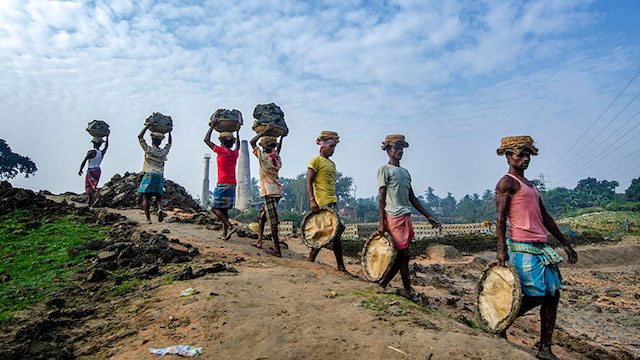



 El
FMI no es un “organismo internacional” sino un órgano oficioso del
Gobierno de EEUU; y negociar con esa institución es, en realidad,
hacerlo con la Casa Blanca...,
El
FMI no es un “organismo internacional” sino un órgano oficioso del
Gobierno de EEUU; y negociar con esa institución es, en realidad,
hacerlo con la Casa Blanca..., Las
transformaciones del Partido Demócrata y su hegemonía en los sectores
capitalistas más dinámicos del país, ¿no habrán provocado la retirada de
su base electoral histórica?.....,
Las
transformaciones del Partido Demócrata y su hegemonía en los sectores
capitalistas más dinámicos del país, ¿no habrán provocado la retirada de
su base electoral histórica?.....,
 Una
selección de los Manuscritos económico-filosóficos de 1844 de Karl Marx
con un ensayo de Marcello Musto que nos introduce al trabajo alienado
en Marx....,
Una
selección de los Manuscritos económico-filosóficos de 1844 de Karl Marx
con un ensayo de Marcello Musto que nos introduce al trabajo alienado
en Marx....,


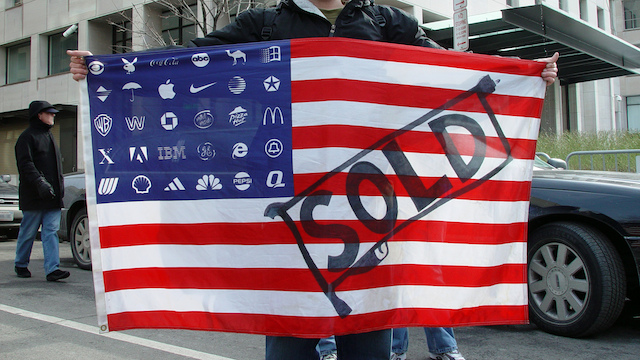 Las
similitudes del sistema dominante actual con otros como el feudalismo,
la esclavitud y el colonialismo son, por lejos, mucho mayores que las
percibidas por la población....
Las
similitudes del sistema dominante actual con otros como el feudalismo,
la esclavitud y el colonialismo son, por lejos, mucho mayores que las
percibidas por la población....

 El
poder en Alemania está recuperando discursos revanchistas e
imperialistas. Empieza a sondear que pasaría con una nueva expansión de
su país hacia el Este....,
El
poder en Alemania está recuperando discursos revanchistas e
imperialistas. Empieza a sondear que pasaría con una nueva expansión de
su país hacia el Este....,

















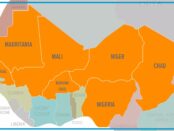

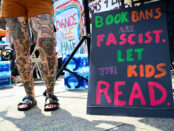
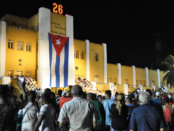




 No
vimos venir la guerra y nos limitamos a constatar el desastre
ecológico, cuando este no es más que un subproducto de la identidad
capitalista de producción y destrucción
No
vimos venir la guerra y nos limitamos a constatar el desastre
ecológico, cuando este no es más que un subproducto de la identidad
capitalista de producción y destrucción
 Hace
muchos años que el capital viene imponiéndose largamente sobre trabajo.
Se esperaba que este Gobierno revirtiera esa situación, pero no sucedió
Hace
muchos años que el capital viene imponiéndose largamente sobre trabajo.
Se esperaba que este Gobierno revirtiera esa situación, pero no sucedió Entender
el fascismo solo en relación con Alemania, Italia y otros países
europeos, impide comprender que es intrínseco a las visiones más
conservadoras del capitalismo......,
Entender
el fascismo solo en relación con Alemania, Italia y otros países
europeos, impide comprender que es intrínseco a las visiones más
conservadoras del capitalismo......,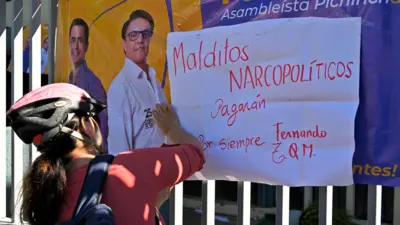 Aunque
más no sea mediante nuestro voto, marcamos un camino a seguir: queremos
un Estado nacionalista, antiimperialista y anticapitalista X
Aunque
más no sea mediante nuestro voto, marcamos un camino a seguir: queremos
un Estado nacionalista, antiimperialista y anticapitalista X  La derecha mexicana exhorta a los padres de familia a quemar los materiales educativos gratuitos, "comunistas" según ellos
La derecha mexicana exhorta a los padres de familia a quemar los materiales educativos gratuitos, "comunistas" según ellos Entrevista
con Pablo González, donde muestra su conocimiento profundo de la
realidad del llamado espacio postsoviético, que cubría para diversos
medios españoles
Entrevista
con Pablo González, donde muestra su conocimiento profundo de la
realidad del llamado espacio postsoviético, que cubría para diversos
medios españoles Entrevista
con Luciano Vasapollo :: Cuando los imperios están en decadencia
desencadenan las mil formas del keynesianismo militar para darse
continuidad a sí mismos
Entrevista
con Luciano Vasapollo :: Cuando los imperios están en decadencia
desencadenan las mil formas del keynesianismo militar para darse
continuidad a sí mismos En
colaboración con Roland Sheppard, que fue testigo ocular en el
auditorio Audubon Ballroom donde asesinaron a Malcolm X el 21 de febrero
de 1965
En
colaboración con Roland Sheppard, que fue testigo ocular en el
auditorio Audubon Ballroom donde asesinaron a Malcolm X el 21 de febrero
de 1965 Era
un trabajador, un profesional de la información que tenía conciencia en
la justa medida que brinda la dignidad, sus vínculos eran el pueblo
Era
un trabajador, un profesional de la información que tenía conciencia en
la justa medida que brinda la dignidad, sus vínculos eran el pueblo Los
pueblos originarios sufren diariamente el mortífero legado de la
industria nuclear, con una estrategia de dominación y aniquilación...,
Los
pueblos originarios sufren diariamente el mortífero legado de la
industria nuclear, con una estrategia de dominación y aniquilación...,:quality(75)/cloudfront-us-east-1.images.arcpublishing.com/elcomercio/CRRENLREXJHNZAXFFZSFXGQD34.jpg) Este
domingo 20 se llevará a cabo la segunda vuelta de las elecciones
presidenciales en Guatemala. Hay fundada posibilidad de que la casta
dominante recurra al fraude
Este
domingo 20 se llevará a cabo la segunda vuelta de las elecciones
presidenciales en Guatemala. Hay fundada posibilidad de que la casta
dominante recurra al fraude






















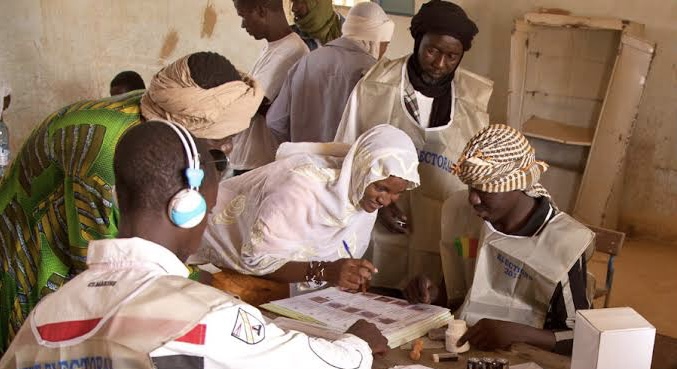































You must be logged in to post a comment